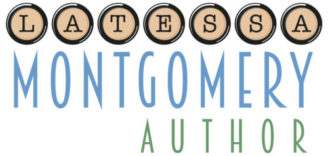 On February 26, 2012, an unarmed 17 year old young man, by the name of Trayvon Martin, was senselessly killed because he was deemed “suspicious” by man that shot him. It is assumed this is in part because of his race (he was African American) and the fact he was dressed in a hooded sweatshirt (hoodie). This case has sparked a nationwide outrage because of the circumstances under which Trayvon was killed, the rationale behind the shooting, and the fact the man responsible has not been arrested, at the time this blog was written.
On February 26, 2012, an unarmed 17 year old young man, by the name of Trayvon Martin, was senselessly killed because he was deemed “suspicious” by man that shot him. It is assumed this is in part because of his race (he was African American) and the fact he was dressed in a hooded sweatshirt (hoodie). This case has sparked a nationwide outrage because of the circumstances under which Trayvon was killed, the rationale behind the shooting, and the fact the man responsible has not been arrested, at the time this blog was written.
Now, my intent with this post is not to discuss whether or not I believe a miscarriage of justice was performed in this situation (just for the record, I do); nor to debate whether or not I feel the shooter based his decision to pursue this young man on a stereotype (because just for the record, I do).
It is to discuss something we, as writers, do on a regular basis as part of our characterization and storytelling. Writers of all walks of life and genres tend to use certain widely held beliefs (and misbeliefs on occasion) about people, groups, places, etc. to make our writing more relatable to our readers, to assist with pacing, and to help drive home certain connections, feelings, and attitudes we wish our readers to develop about our characters. Using certain widely held beliefs, whether they are true or not, helps us add humor and assists us in establishing reader expectations as to how a character looks (feature wise) and provide believable motivations for their actions, goals, etc. In my opinion, this is kind of, sort of like using stereotypes, or at least bits and pieces of them, to make our job easier.
I mean, if I wanted to paint a character as a thug, I may dress him in baggy pants, a hat pulled down so low it covers his eyes, and a sweatshirt. If I wanted to paint a character as a prep, I may dress him in khakis, a polo shirt, and some loafers. Using a few generalities and commonly held beliefs about these two groups of individuals, I am able to give them the appropriate flavor. My gangster character may have some from a low income background; my prepster may have come from an upper middle class. And given the social circles they each hung out with, I can come up with goals, motivations, and conflicts for them that will be believable and true to the characters I created.
Of course, I’d be remiss if I did not point out that there’s a balance to using this technique. All good authors I know, whether they are published or not, know that you run the risk of creating an unintended caricature or being offensive to the group of individuals (be them bound by race, ethnicity, hobby, lifestyle choice, etc.). Speaking for myself, I take care to not use sweeping judgments of any one, or group of, people, places or things in my stories. Why? Because it’s not my style, unless, of course, my intent is to purposely showcase a prejudice or misbelief to prove a point. In fact, one of the tenets of my author’s voice is the acceptance of others and their choices, whether or not you agree with it.
Let’s be real, making judgement calls and assumptions about people we don’t know is a part of life. It’s one of those things we, as hiring managers, parents, etc., do on a regular basis. There is a reason you dress a certain way for a job interview. There is a reason some people dress a certain way when meeting the parents of their girlfriend or boyfriend. There is a reason criminals use disguises. It helps them better fit certain roles so they can get into a position to take or destroy the object of their fascination.
This got me to thinking, is it really fair to judge anyone just because of the color of their skin, their religious beliefs, the way they dress, or their lifestyle choices? No, it’s not. It’s one thing to make an informed decision based on information you’ve gathered visually and verbally, yet quite another to take any type of action based solely on just one factor. Heck, my gangster character could just as easily wear a shirt and tie; my little prepster could have a penchant for jeans and hoodies.
The Martin case has touched me in many ways. I will limit my observations here to as they pertain to me, the author. As a writer, I will remain cognizant of how I choose to shine particular lights and shadows on my characters. I also plan to be more focused on my craft and the stories I want to write and the characters I want to showcase. I’ve met some resistance in the past with one of my manuscripts because it features predominately African American characters and an interracial romance. But why should the “mainstream” pass on it just because of the race of my characters? Why should the marketing and selling of any book be radically harder just because it features minorities or special interest groups?
And lastly, what right does anyone have to judge my writing, your writing, you as a person, or your characters just because of … well, anything?



A.T. Russell
Spot on, LaTessa. Predominantly I read fantasy. Given that what plagues our society each day doesn’t change, even in many writers’ imaginations, it makes me wonder if social prejudices and stereotypes aren’t static mental afflictions we all suffer from.
La-Tessa
A.T. that’s a good point. I know everyone has them to an extent. It’s human nature to regurgitate lessons we’ve learned during our impressionable years, whether they are right or wrong. But in the end, as a reasonable and rational adults, we are responsible for adopting the morals and philosophies by which we will live our lives.
But, I think we also have to consider that we all use context clues to make snap judgments. Right or wrong, it’s what we as humans do when we are trying to gauge our surroundings. So on the one hand, yes, you should not always judge a book by its cover and assume the worst about it based on its genre, wear & tear, etc. However, 9 times out of 10, if you pick up a book with a dragon on the cover, it’s going to have some fantasy elements. If you pick up a book with a barely clothed couple on front, it’s probably going to feature some heavy romance in it.
It’s a catch 22 of sorts. We are going to judge and use preconceived thoughts and stereotypes in both everyday living and in our writing, however at some point rationality has to kick in and we need to be sure we are being fair in our “snap” judgment or use of such stereotypes.